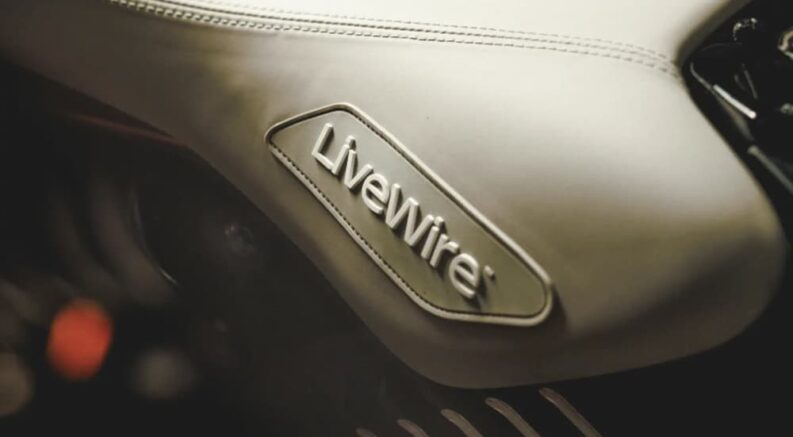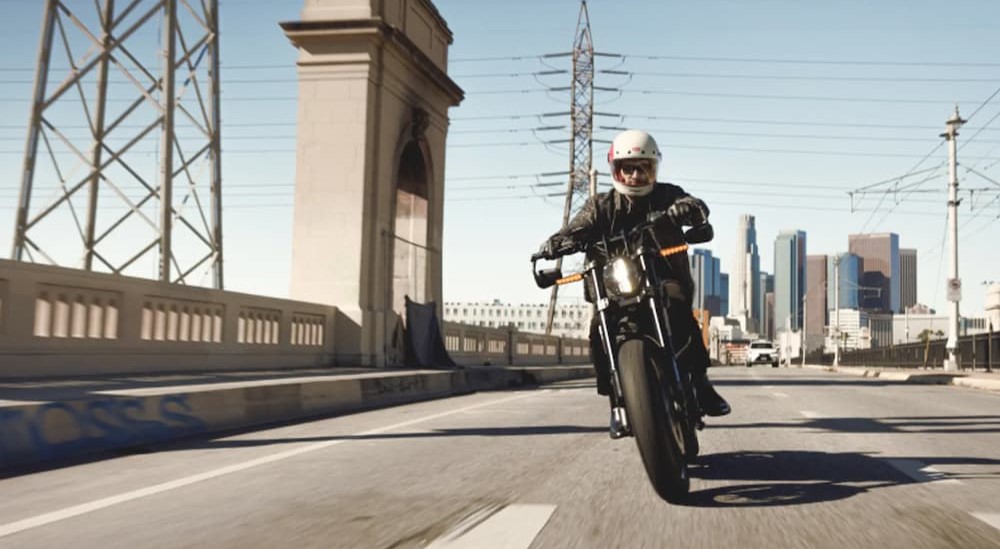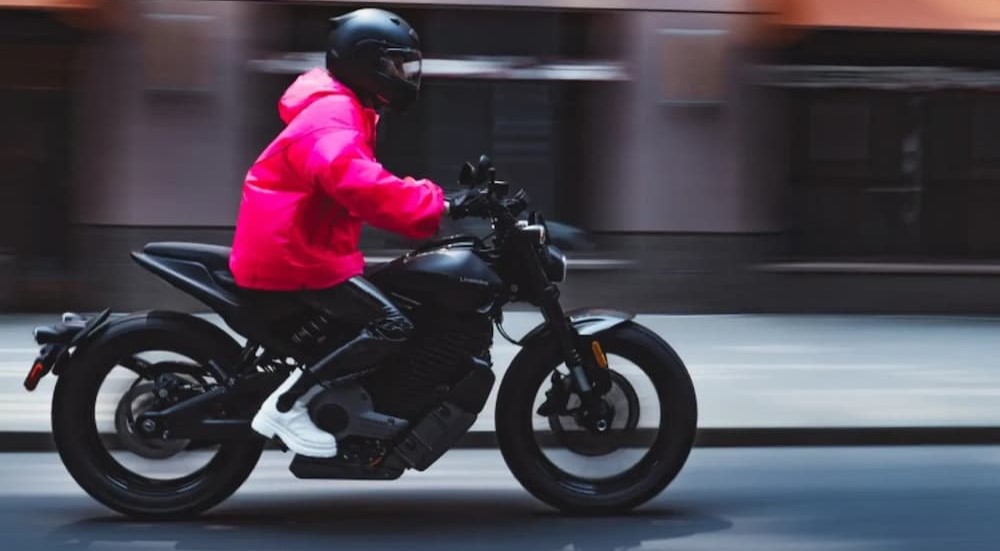Since the first LiveWire electric motorcycle burst on the scene in 2019, the rest of the biker world has been on notice. The LiveWire ONE shattered the records for eighth-mile and quarter-mile drag times by an all-electric production motorcycle. The S2 Del Mar follow-up offered a budget-friendly version that was still impressive, going from 0-60 mph in a mere 3.0 seconds and getting up to 113 miles of city cruising on a single charge.
Now LiveWire has completed the trifecta with another bike of the future. The LiveWire S2 Mulholland, the third LiveWire bike and the second on the S2 platform, went on sale in March 2024. Does the new LiveWire Mulholland live up to the promise set by its predecessors? Today, let’s take a closer look at the latest electric performance cruiser.
What Is a LiveWire Motorcycle?
For starters, LiveWire has nothing to do with the Mountain Dew beverage, but it is closely connected to perhaps America’s most respected motorcycle brand. LiveWire was originally Harley-Davidson’s first electric model ever, as the famed touring bike manufacturer sought to find its footing in the growing electric motorcycle scene. The Harley-Davidson LiveWire prototype was first showcased in 2014 with its official debut five years later. In addition to the drag racing records mentioned earlier, the LiveWire ONE reportedly also set the new mark for the farthest an electric motorcycle has been ridden in 24 hours.
Late 2022 saw a major shift with Harley-Davidson officially spinning the LiveWire brand off into a separate company, which included a $1.77 billion merger with an SPAC firm. As part of the deal, LiveWire Group, Inc. became America’s first publicly traded EV motorcycle company. It’s not quite as it seems, though. Harley-Davidson still has a 74% ownership stake, keeping its thumb very much on the pulse of what’s happening at LiveWire.
Shortly after the spin-off, LiveWire unleashed the S2 Del Mar with its new Arrow modular platform. Based on flat-track motorcycles, intended to be smaller and more affordable than the LiveWire ONE, and inspired in part by flat-track motorcycles, it was part of a larger goal to develop three new models and produce 100,000 electric motorcycles a year by 2026. The LiveWire S2 Mulholland is the latest step in this plan for EV bike domination.
Comparing the LiveWire Mulholland to the LiveWire Del Mar
Now that you know the background of the LiveWire S2 Mulholland, let’s see what it can do. Does it meet or surpass the S2 Del Mar? What type of bikers should be flocking to the Mulholland?
Performance and Range
I’ll start with the basics: how powerful is the S2 Mulholland and how far can it go? Not surprisingly given the shared platform, LiveWire has given this motorcycle the same motor and 10.5kWh battery back as the S2 Del Mar, meaning 84 hp and an impressive 194 lb-ft of torque. (The LiveWire ONE has 100 hp but only 86 lb-ft of torque.)
Interestingly, though, even with the Mulholland being four pounds lighter than its older sibling, it is slightly slower, going 0-60 mph in “only” 3.3 seconds and topping out at 99 mph versus 103 mph. Upon closer inspection, it appears LiveWire has throttled the top speed back slightly in the name of distance. The S2 Mulholland is rated by the manufacturer for 121 miles of city range, 73 miles of highway range at 55 mph, and 91 miles combined range. By comparison, the S2 Del Mar is listed for 113 miles in the city, 70 on the highway, and 86 miles combined. That means fewer stops and more time on the bike.
This choice makes perfect sense given the S2 Mulholland’s positioning as a cruiser. These riders are often willing to sacrifice a little top-end performance in favor of being able to cruise longer between stops, and LiveWire has obliged. You can make it from San Francisco to San Jose or Miami Beach to Boca Raton on a full charge, letting you set out on an adventure without worry. Like the Del Mar, it takes 78 minutes to go from 20% to 80% battery life on a Level 2 charger, so you can get back on the open road relatively quickly.
Design
As with performance, the design of the S2 Mulholland and Del Mar is genetically similar. They have the same modular frame with a cast aluminum powertrain and swingarm, Brembo front and rear brakes, and black aluminum wheels. Cornering-enhanced ABS, drag-torque slip control, and cornering-enhanced traction control improve handling and safety. It will feel like your tires are glued to the pavement.
Beyond this foundation, though, things veer. The LiveWire Mulholland is more than an inch shorter, has a three-fourths-inch lower ride height, and is built with significantly more rake and trail. These factors make the bike more stable for everyday riding and weekend exploring. The laden seat height is a little lower as well, getting the rider a bit more out of the air and accommodating shorter riders.
Furthermore, LiveWire has replaced the Showa front forks and rear monoshock with Hitachi parts. This suspension system provides more front travel but less rear travel than the Del Mar, giving feedback more appropriate for a cruiser motorcycle. (Don’t worry, the preload and rebound are still adjustable.) LiveWire has also switched from Dunlop DT-1 flat-track tires to Dunlop RoadSmart IV touring tires, another nod to the Mulholland’s cruiser focus. Finally, they have doubled the number of wheel spokes from 10 to 20 for more strength and a more sophisticated look.
Sustainable Manufacturing
Moving to electric motorcycles is already a big move by LiveWire and Harley-Davidson. (The Harley-Davidson name may not be on the motorcycles anymore, but considering their 74% ownership, I still consider them to be Harley-Davidsons.) However, the S2 Mulholland has taken the next step. It’s the first LiveWire motorcycle to use sustainable materials and components in its construction, showing full commitment to the future of riding.
The front and rear fenders on each S2 Mulholland are made of CAP Hemp, a 100% organic bio-composite material blend. LiveWire uses HYLON OCEAN, a plastic derived from recycled nylon fishing nets, to make the radiator shrouds and internal wiring holders. The seat is made of petroleum-free silicone, which is more eco-friendly than traditional seat materials such as vinyl and leather and is also recyclable. Also, an unpainted Lunar White finish is available to limit the use of paint’s potentially harmful substances.
The Verdict
Those who were charmed by the S2 Del Mar but wanted an electric motorcycle that was more geared towards cruising and touring, and that didn’t cost as much as the LiveWire One, finally have their bike. The LiveWire S2 Mulholland takes the core Arrow platform and adapts it for people who want to go farther on interstate highways and city rides while being even more environmentally friendly. Even if you’ve never heard of LiveWire before now, you may well be intrigued by their latest motorcycle.
With pricing starting at $15,999, the LiveWire S2 Mulholland is more than a reasonable entry into the world of electric motorcycles. It sure isn’t the classic Harley-Davidson riders think of, but it’s ideal for the new age of eco-conscious cruising that still brings excitement. I’m ready to take one for a drive, and I hope you are, too.






